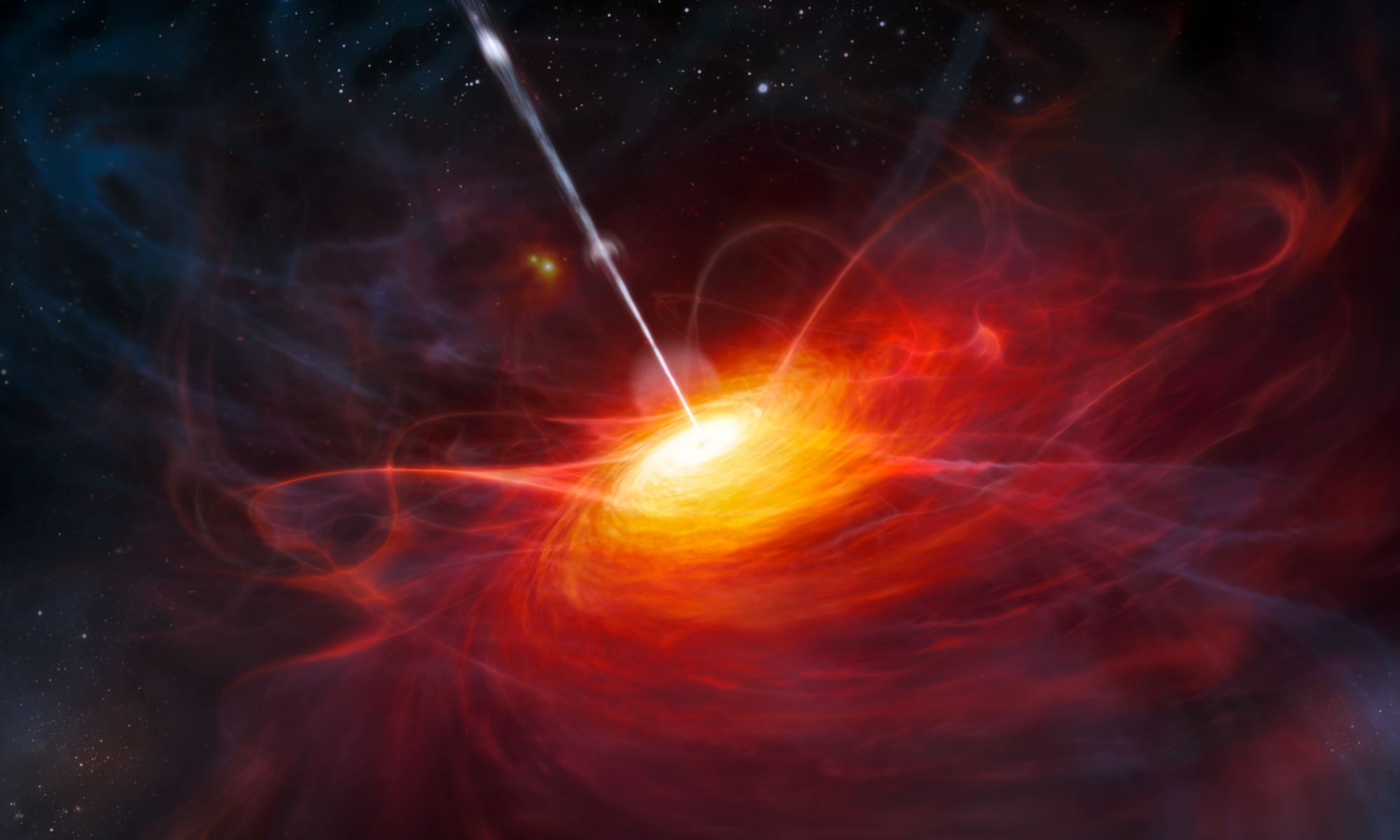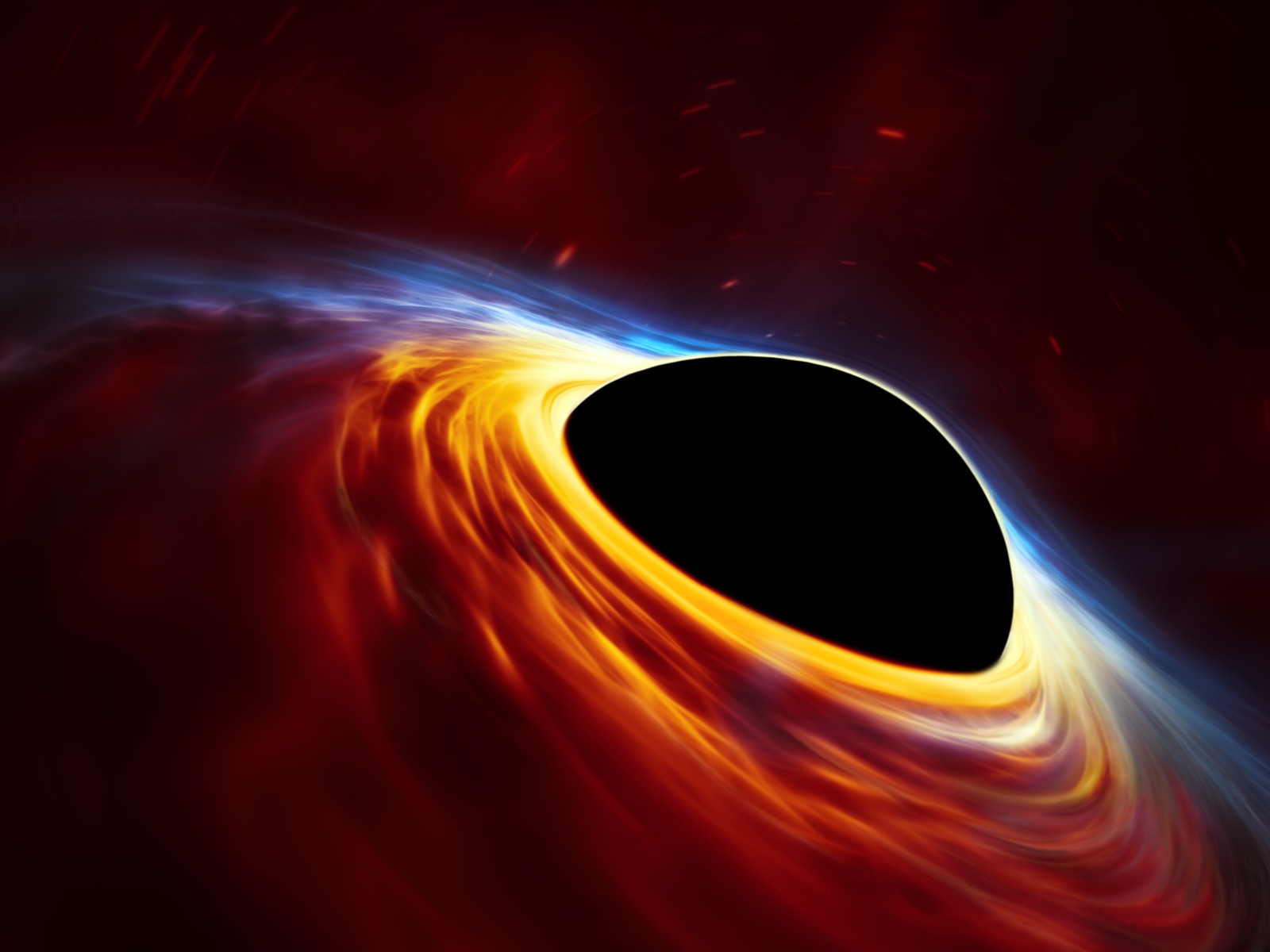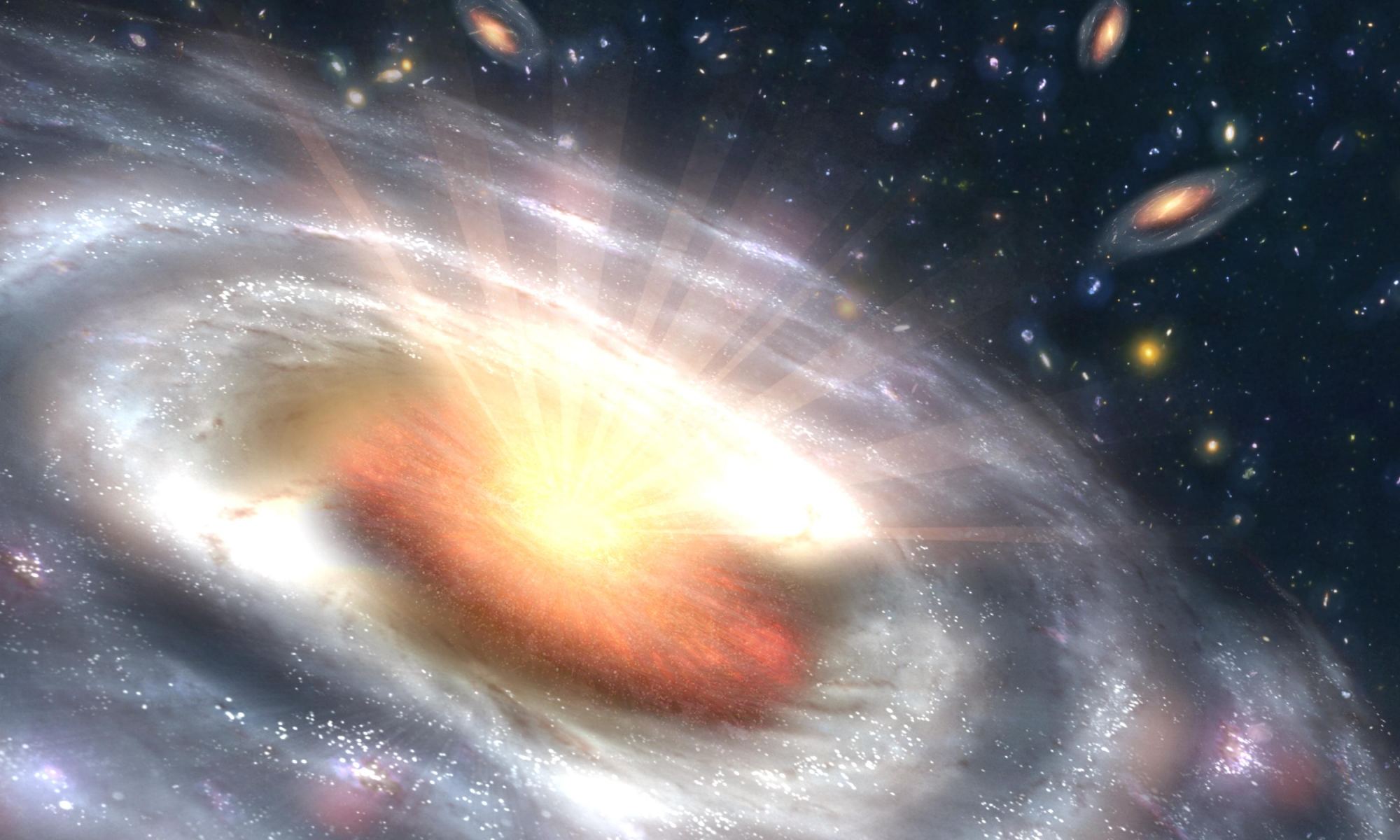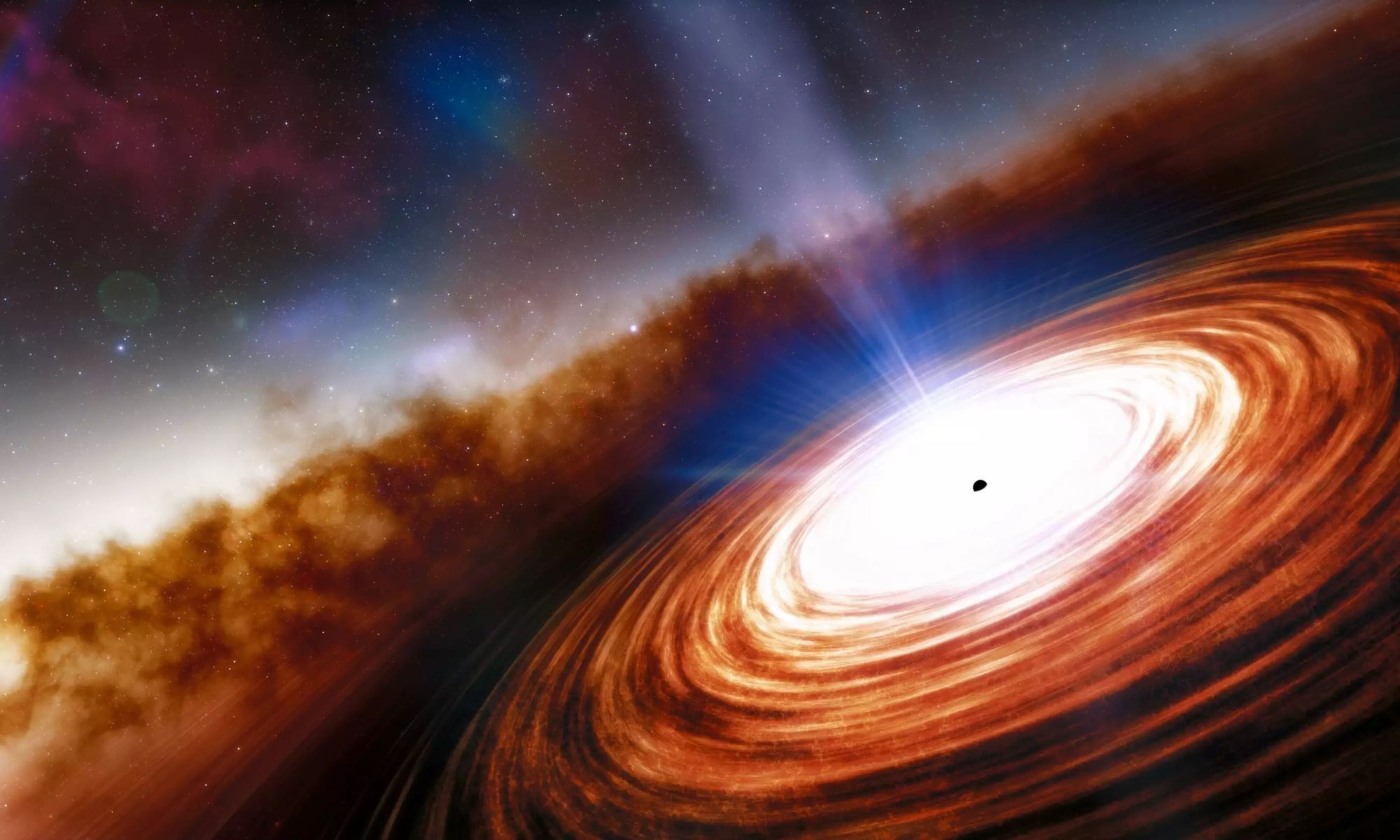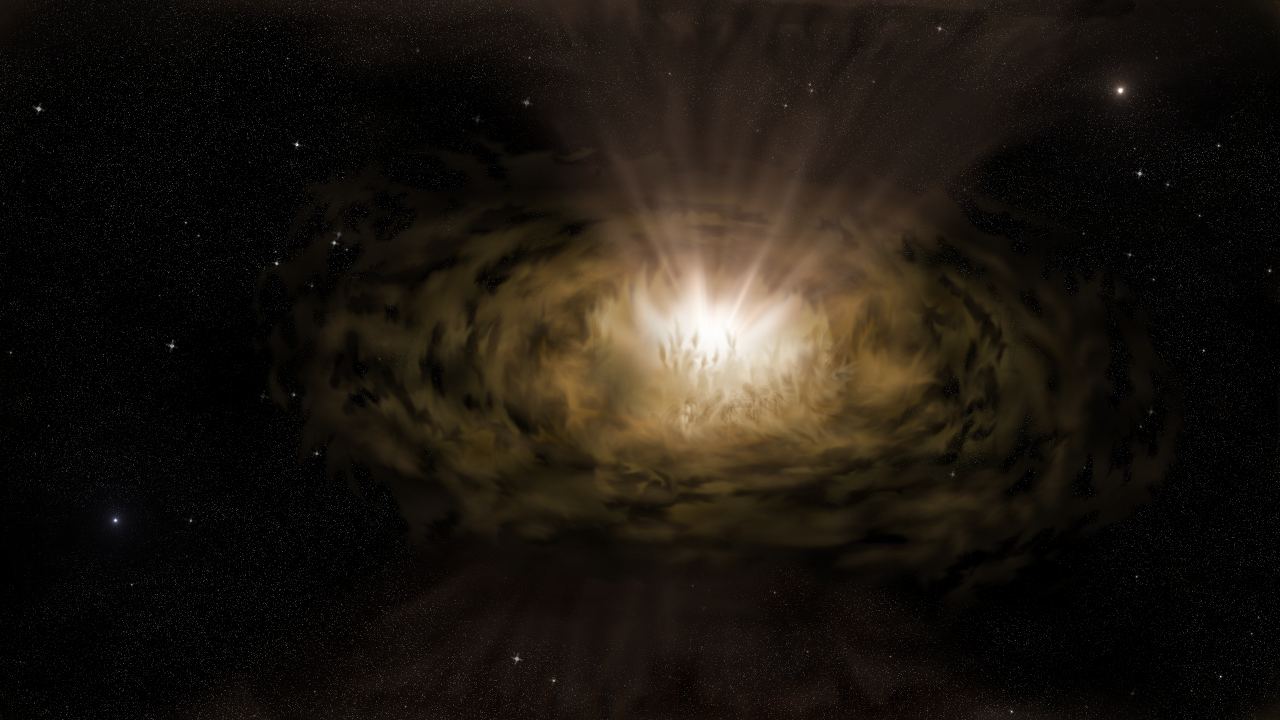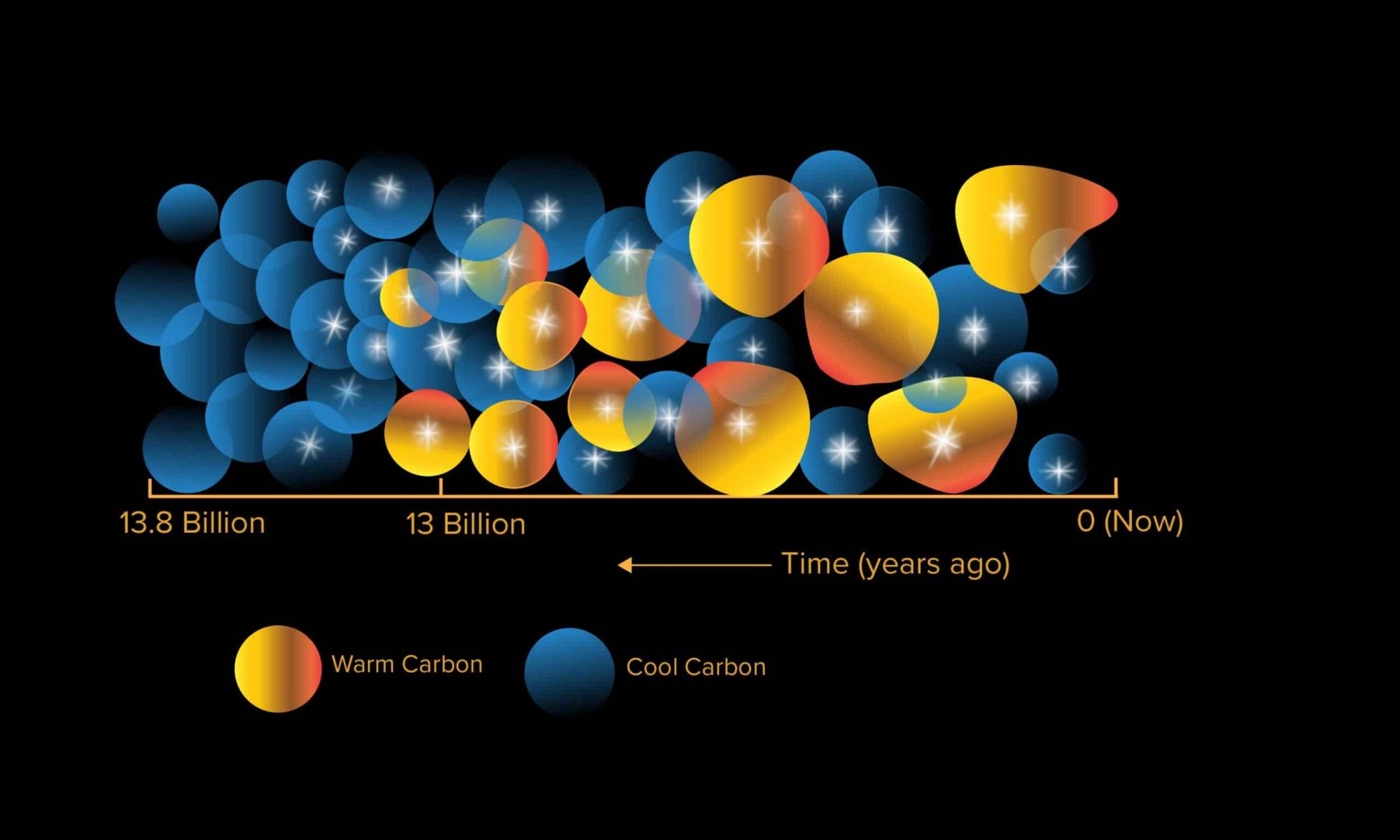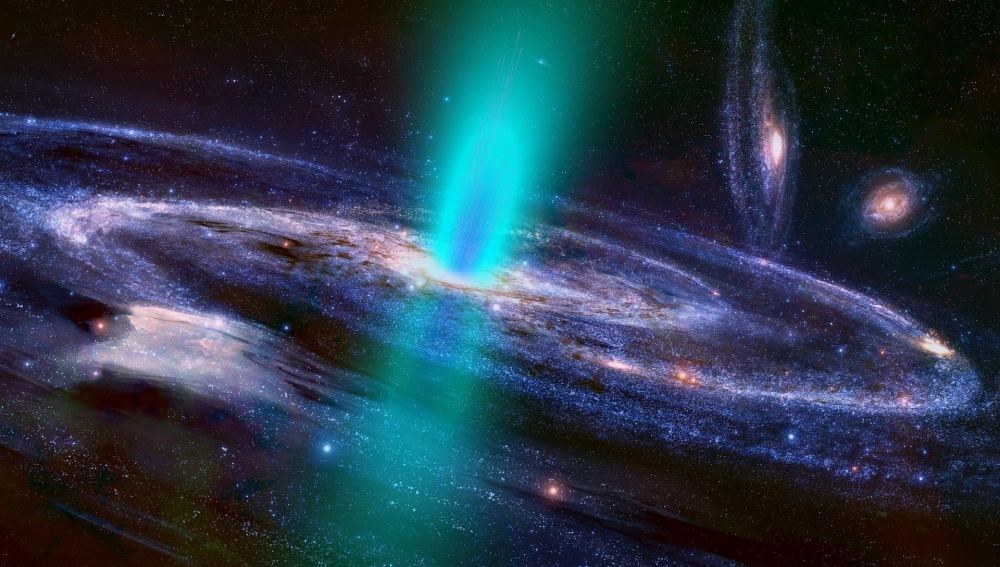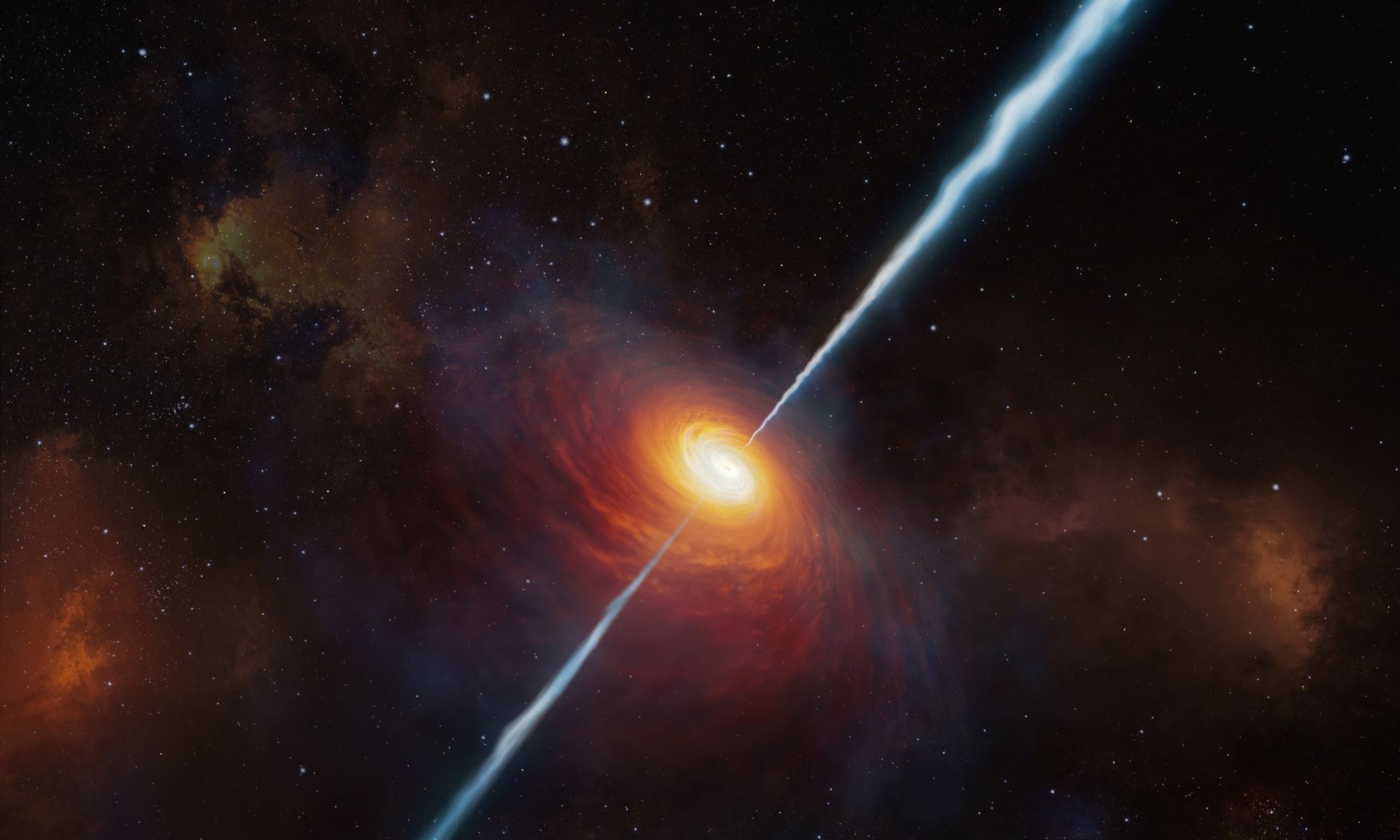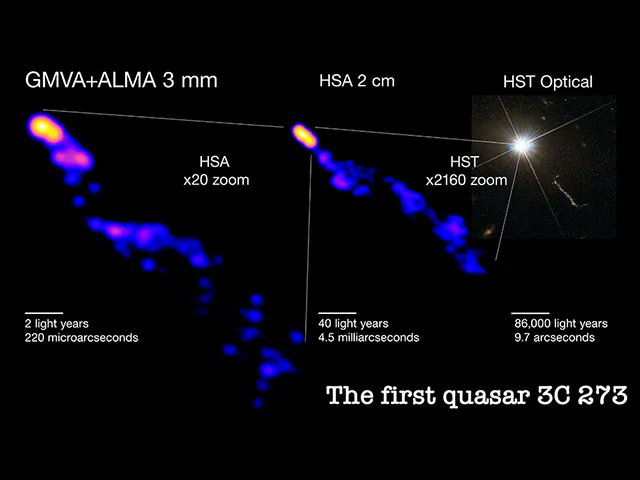After almost seventy years of study, astronomers are still fascinated by active galactic nuclei (AGN), otherwise known as quasi-stellar objects (or “quasars.”) These are the result of supermassive black holes (SMBHs) at the center of massive galaxies, which cause gas and dust to fall in around them and form accretion disks. The material in these disks is accelerated to close to the speed of light, causing it to release tremendous amounts of radiation in the visible, radio, infrared, ultraviolet, gamma-ray, and X-ray wavelengths. In fact, quasars are so bright that they temporarily outshine every star in their host galaxy’s disk combined.
The brightest quasar observed to date, 100,000 billion times as luminous as our Sun, is known as SMSS J114447.77-430859.3 (J1144). This AGN is hosted by a galaxy located roughly 9.6 billion light years from Earth between the constellations Centaurus and Hydra. Using data from the eROSITA All Sky Survey and other space telescopes, an international team of astronomers conducted the first X-ray observations of J1144. This data allowed the team to investigate prevailing theories about AGNs that could provide new insight into the inner workings of quasars and how they affect their host galaxies.
Continue reading “eROSITA Sees Changes in the Most Powerful Quasar”
